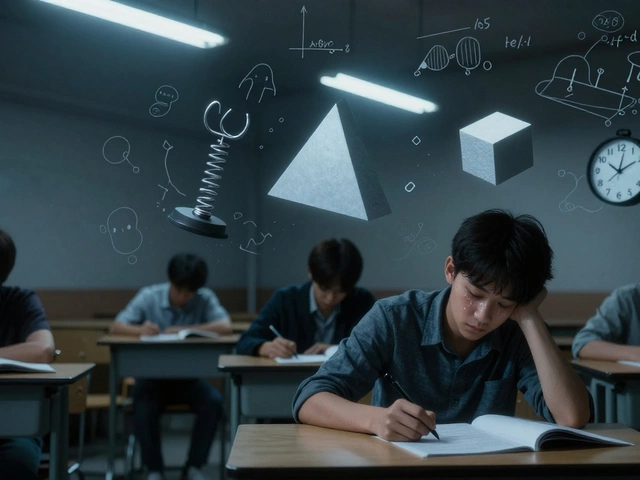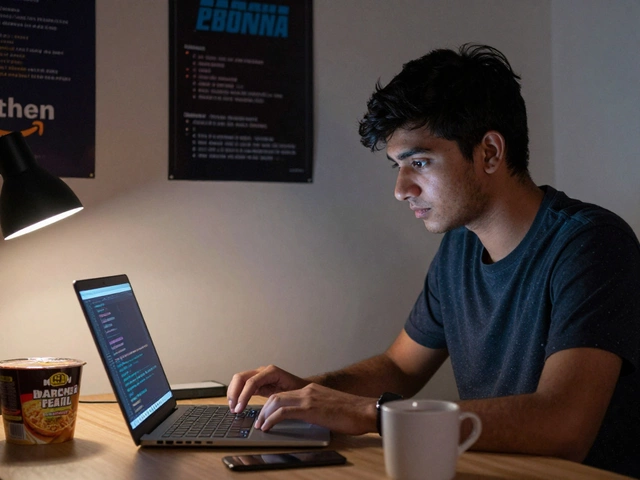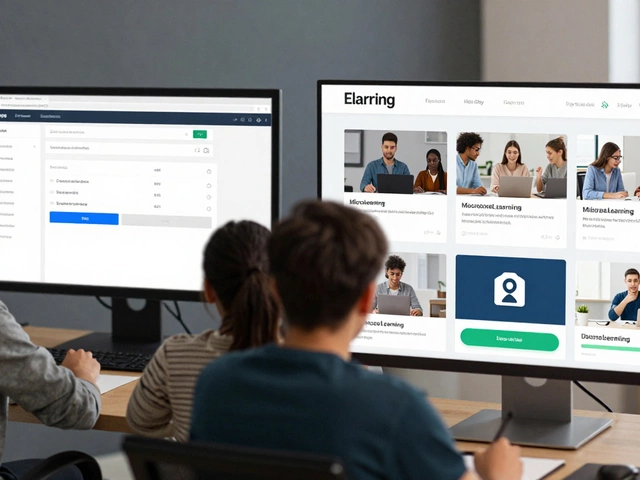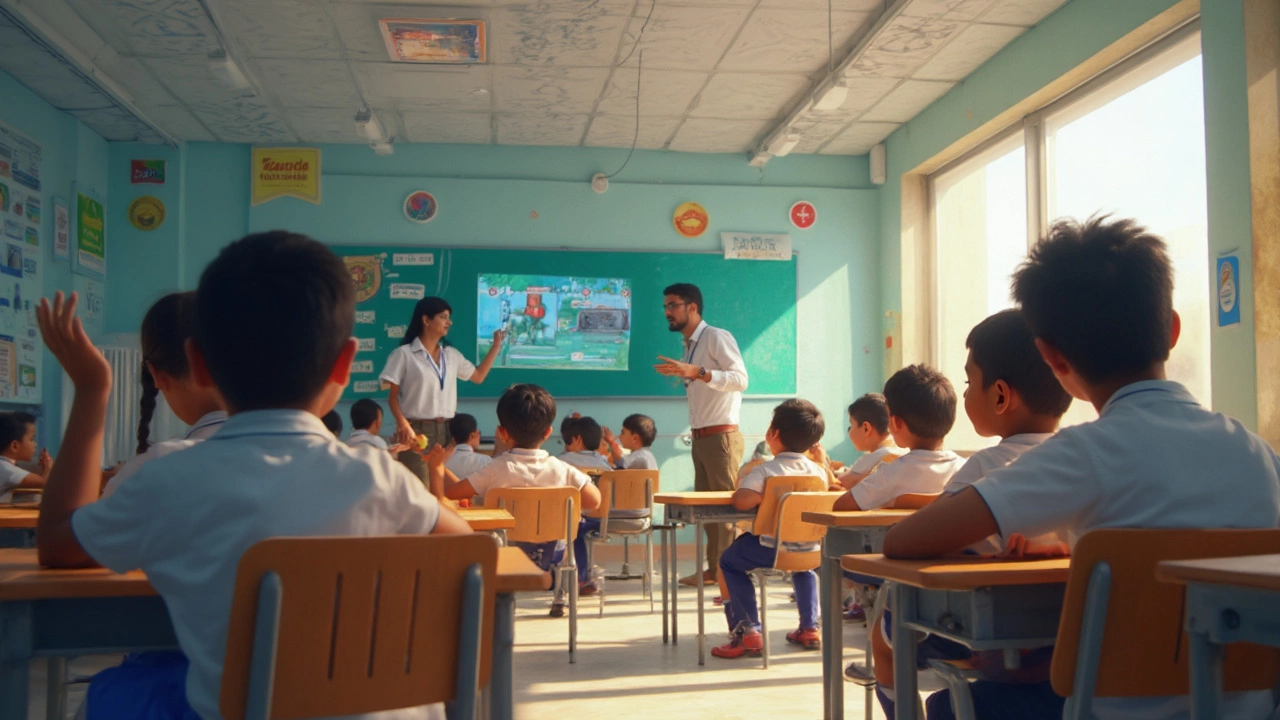If you're thinking about sending your child to a CBSE school in Dubai or India, it probably drives you crazy working out if one is actually 'better.' It's not just about the syllabus being the same—CBSE is CBSE everywhere, right? Not quite. The way that syllabus gets taught, the type of support kids get, and the whole school vibe are totally different once you cross borders.
Dubai's CBSE schools are packed with students from all over the world, but mostly Indian families. The class sizes tend to be smaller. Classrooms are often fitted out with the latest tech—think smart boards and free Wi-Fi for every student. Compare that to many Indian CBSE schools, where class sizes can balloon way past 40 or more, and smart boards are a nice bonus, not a given.
But hey, bigger classes don't always mean weaker education. The culture, teacher quality, and even daily routines play a massive role. Want your child exposed to a strict academic push? Some Indian schools have a rep for laser-like focus on board exam results. But in Dubai, there’s usually a stronger mix of academics and life skills, with plenty of focus on extra-curricular activities.
- What Makes CBSE Schools in Dubai and India Different?
- Quality of Teachers and Teaching Style
- Classroom Experience and Facilities
- Student Life and Cultural Mix
- Academic Results and College Placements
- What Should Parents Really Consider?
What Makes CBSE Schools in Dubai and India Different?
The CBSE syllabus is the same at its core, but how it's delivered in Dubai and India feels pretty different once you look closely. To start, schools in Dubai have to answer to the Knowledge and Human Development Authority (KHDA), which throws strict rules at them for teacher quality, facilities, and student well-being. In India, the standards depend heavily on which state or city you're in. There’s way more variation in the basics, like classroom size or even the upkeep of school buildings.
CBSE schools in Dubai often have smaller class sizes—usually between 20 and 30 students. Most Indian CBSE schools, especially popular ones in urban areas, work with more than 40 students per class. That smaller number in Dubai means students might get extra attention, and teachers can adjust lessons on the fly if kids are struggling.
The next big thing? Infrastructure. Walk into a typical CBSE school in Dubai and you’ll see air-conditioned classrooms, modern labs, and plenty of sports and art facilities. In India, it really depends on the budget of the school. Big-city private schools can match Dubai in terms of facilities, but you'll still find plenty running on older setups, especially outside metros.
Here’s a quick look at a few differences:
| Aspect | Dubai CBSE Schools | India CBSE Schools |
|---|---|---|
| Average Class Size | 20-30 | 35-45 (sometimes more) |
| Basic Facilities | Highly modern, regulated | Varies a lot, some modern, some basic |
| Regulatory Body | KHDA | Local/state education boards, CBSE |
| Teacher Background | Mostly Indian, often with extra certifications | Mainly Indian, teacher quality varies |
If you’re looking at language and cultural mix, Dubai CBSE schools are more diverse, but almost all students have an Indian background at home. In India, the diversity comes from local languages and culture, but not as much international influence. Extracurriculars, like sports or music, get major attention in Dubai—partly because the KHDA pushes for a balanced approach. In Indian CBSE schools, focus is still heavy on academics—although big private schools do offer clubs and sports, but not always on the same scale or with the same resources.
Bottom line: both setups come with pros and cons. If you believe in technology-driven modern learning, Dubai schools usually have the edge. If you value tradition, strict classroom discipline, and tried-and-tested exam training, CBSE schools in India hold strong ground.
Quality of Teachers and Teaching Style
People often assume teachers in Dubai’s CBSE schools get better training, and it's partly true. Many Dubai schools require teachers to hold not just a B.Ed. but also extra certifications and years of experience teaching the CBSE syllabus. Schools in top Dubai chains like GEMS do frequent teacher training—sometimes twice a year—on digital learning tools, updated curricula, and even mental health support. Indian schools, especially private ones in cities like Delhi or Bangalore, also stress on teacher credentials but often have tighter budgets and less regular upskilling.
The teaching style itself is another big difference. In Dubai, you’re likely to see more activity-based and tech-based lessons. Kids will work in groups, take quizzes on tablets, and do project-based work that’s checked more for understanding than for rote accuracy. In most Indian CBSE schools, the focus is heavier on textbook learning, board exam prep, and lectures, especially from grade 8 onward. Teachers are skilled but may simply not have the time to focus on every child, thanks to bigger classes.
Here’s a quick snapshot comparing both sides:
| Aspect | Dubai CBSE Schools | India CBSE Schools |
|---|---|---|
| Average Teacher Training Sessions/Year | 2-4 | 1-2 |
| Typical Class Size | 25-30 | 40-50 |
| Tech Integration | Smartboards, tablets, e-learning platforms | Mostly traditional, with pockets of tech |
| Parent-Teacher Feedback | Quarterly, often digital | Twice yearly, mostly in-person |
If your child learns better through hands-on projects, presentations, or discussions, they’ll probably click with the teaching style in Dubai. But if they like following a set book, drilling concepts till they’re perfect, and getting ready for tough board exams, the approach in India might suit them more. It’s all about knowing what lights that spark in your kid—and what actually fits your plans for their future.
Classroom Experience and Facilities
Here’s where you’ll really notice the difference between CBSE schools in Dubai and India—the classroom setup. Walk into a Dubai campus and you’ll likely see neat rows for under twenty-five students, air conditioning that actually works, and projectors in most rooms. A lot of Dubai schools take pride in tech: digital whiteboards, tablets, and fast internet are pretty much the norm. Everyone gets to see, hear, and try stuff during lessons—think interactive science experiments or math games on tablets.
In India, it really depends on the school. Some of the top private schools do match Dubai when it comes to fancy facilities, but many others don’t. A lot of Indian CBSE schools still work with the basics: chalkboards, packed rooms, old wooden desks, and less tech. Overcrowding is a real thing—sometimes in a class of forty or more, it’s easy for kids at the back to switch off. So, a motivated student does fine but others might get left behind unless they speak up.
Let’s see a quick comparison of typical facilities:
| Facility | Dubai CBSE School | India CBSE School |
|---|---|---|
| Classroom Size | 20-25 students | 30-50 students |
| Tech Access | Smart boards, tablets, Wi-Fi | Chalkboards; some have smart boards |
| Air Conditioning | Standard | Depends on school tier & city |
| Labs & Libraries | Well-equipped, modern | Top schools: good; others: basic |
Students in Dubai usually have more personal attention in class since teachers aren’t stretched thin. Plus, after-class help is common, so kids who struggle can catch up with extra sessions. In India, some schools do this too, but when you’ve got forty-plus in a lesson, it’s just trickier to manage. Want your kid to blend athletics, art, or coding with academics? Dubai’s CBSE schools often make time and space for these through clubs and projects, while in India, you’ll find these mostly in big-name urban schools.
- If your child thrives with hands-on tools and fewer distractions, Dubai might have the edge.
- If you’re in a Tier 1 city in India and can afford top private schools, facilities can be world-class, just pricier and more competitive to enter.
- For those who value traditional learning environments, India still delivers—but often with fewer frills.
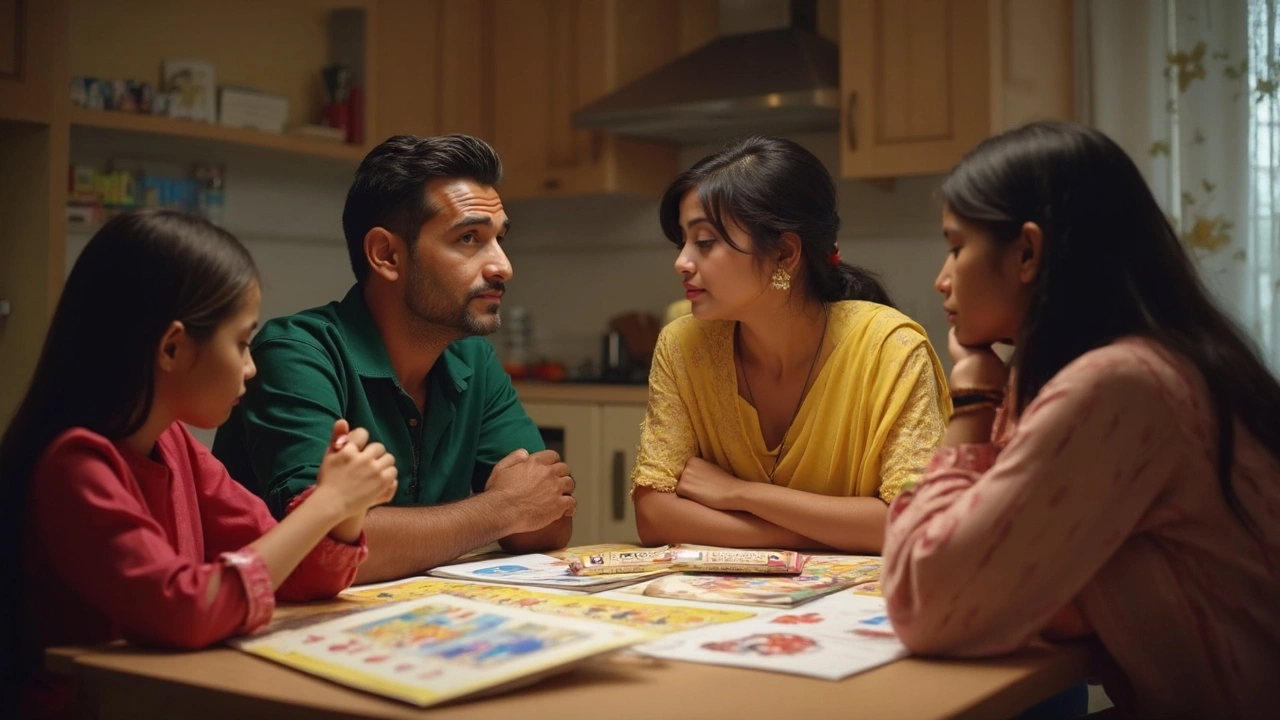
Student Life and Cultural Mix
When people talk about CBSE schools in Dubai, they almost always mention the crazy mix of cultures. It's not just Indians—though they dominate the halls—it's also kids from Pakistan, Bangladesh, the Philippines, and even a handful from Europe and Africa. This blend means your child’s friends might celebrate Eid, Diwali, and Christmas in the same month, and nobody blinks an eye. You see festive days and cultural events woven into everyday school life, making it way more global than what you usually find back home in India.
In India, you typically get kids from similar backgrounds, most living nearby. There’s a strong sense of local language, food, and traditions. Celebrations are there, sure, but they’re usually about one community at a time. If you’re looking for a classic Indian childhood—cricket after school, friendly teasing in Hindi or Tamil, familiar sweets at the canteen—you’ll find it here.
Life outside the classroom in Dubai brings other perks—safer commutes on school buses, regular field trips, and even after-school language clubs. Indian schools also have plenty of clubs and extra activities, but resources and choices can depend a lot on the city and whether you’re at a private or public school.
Here's a quick look at some of the most noticeable differences in student life between Dubai education and India:
- Festivals and languages: Dubai's CBSE schools celebrate almost every festival and run language clubs for everything from Arabic to Malayalam.
- Safety and transport: Dubai offers secure, air-conditioned buses and strict safety protocols—while Indian schools vary a lot, especially in smaller towns.
- Extracurriculars: You find a wider range of activities in Dubai, including robotics and coding clubs. Indian schools lean toward debate, sports, and traditional music or dance.
- Exposure: Students in Dubai get regular chances to meet professionals, visit museums, even join international Olympiads with less red tape.
Here's a handy table comparing some basics in daily life between Dubai and India for CBSE students:
| Aspect | Dubai CBSE Schools | India CBSE Schools |
|---|---|---|
| Cultural Mix | High—students from many countries | Mostly Indian regional diversity |
| Languages Used | English, Hindi, Arabic, others | English, Hindi, regional language |
| Festival Celebrations | All major festivals, multi-faith | Primarily local/Indian festivals |
| Extracurricular Choices | Broad and tech-heavy | Active but more traditional |
So for parents, ask yourself what kind of exposure you want for your child. Some thrive in the global buzz of Dubai, learning about different cultures side-by-side. Others feel more at home around familiar faces, flavors, and traditions. Both options have their wins—the trick is knowing what fits best for your family's goals.
Academic Results and College Placements
This is the section that gets everyone nervous—marks and future prospects. When you look at CBSE board exam results from both Dubai and India, you’ll see a lot of high scores, but there are some differences in trends and what those grades mean for life after school.
In India, CBSE board toppers often score in the high 90s, and the level of competition is wild. The pressure to get into top Indian colleges like IITs, Delhi University, or AIIMS is fierce. Students from India’s top CBSE schools usually have coaching for competitive entrance tests right alongside regular classes, so many are just laser-focused on marks and ranks.
In Dubai, most CBSE schools put a lot of effort into supporting students with exam prep too, but you won’t see the same kind of cut-throat competition. Instead, the focus is more balanced—a good academic score matters, but so do hobbies, language skills, and volunteering. Dubai schools also guide students for universities abroad, not just Indian colleges. They bring in counselors for SAT, IELTS, and UCAS advice, because quite a few students end up in countries like the US, UK, Australia, or Canada.
| Aspect | Dubai CBSE Schools | India CBSE Schools |
|---|---|---|
| Board Exam Success Rate | Over 98% pass, averages in the 80s and 90s | High pass rates in top schools, but huge variation across regions |
| Top College Admissions | Mostly abroad or NRI quota in Indian colleges | Domestic admissions, focus on IIT, DU, AIIMS |
| Exam Coaching | Moderate, more holistic approach | Intensive, often daily extra classes |
If your dream is a top Indian college, being in India can make it easier just due to proximity, coaching access, and quota benefits. But for students aiming globally, Dubai education makes it easier to prepare applications, get international exposure, and build English fluency through regular use and classroom requirements.
Here’s one tip: Ask Dubai schools about their alumni list—where are their students getting placed? Many share these stats openly, so check how many kids made it to places you’d want your child to go. And for India, see if the school actually has solid ties with the colleges or just advertises high results.
What Should Parents Really Consider?
Here's where it gets personal. It’s not smart to pick a school just because it’s in Dubai or India. You want to look beyond shiny buildings and the promise of "international standards." Let’s be real—success in CBSE schools, whether in Dubai or India, depends on stuff most brochures barely talk about.
One huge thing: teaching style. Do you want strict academics or a more balanced approach? Dubai schools often push kids to explore more than just books—think team projects, debates, and sports right alongside those CBSE exams. Many Indian schools, especially the top-rated ones, focus heavily on scores, competitive tests, and board exam rankings. Ask yourself what fits your child’s personality and strengths.
Class size is another biggie. In Dubai, it’s not rare to find classrooms with 20 to 25 students, which can mean more attention per kid. India, especially in cities, sometimes sees classes of 40 or more—that puts pressure on teachers and lowers one-on-one time. If your child needs extra support or is a bit introverted, these details actually matter.
Now, think about resources. Dubai’s CBSE schools tend to have newer lab equipment, reliable sports facilities, and tech in every room. Indian schools have big variety—some are super modern, others less so, and resources can really swing depending on tuition fees.
If you care about college admissions, especially for kids aiming for Indian universities, graduating from a well-known Indian CBSE school can be a plus because local boards may recognize these schools faster. Meanwhile, Dubai CBSE schools have gotten better at bridging this gap, but admissions can still get tricky for some state quotas and extra requirements.
Don’t forget about culture and values. In Dubai, your child will meet classmates from all over, and school culture often feels more global, but it’s also tied to expat Indian traditions. Indian schools, especially outside huge metros, keep things a bit more “home-grown” and rooted in everyday Indian life.
If you want a quick look at some key points, check out this table:
| Factor | Dubai CBSE Schools | India CBSE Schools |
|---|---|---|
| Average Class Size | 20-25 students | 35-45 students (in cities) |
| Tech Access | Very high (smart boards, Wi-Fi) | Medium to high (varies by school) |
| Teaching Style | Balanced, mix of academics and activities | Academic-focused |
| Board Exam Prep | Strong but with life skills too | Intense board focus |
| Cultural Mix | Diverse, global Indian community | Mainly local, rooted in Indian context |
Bottom line: Don’t get caught up in what sounds "best" overall. List what truly matters for your family—curriculum, size, values, cost—and match that to your shortlist. Real moms and dads often find the right fit comes from things you felt on that first campus visit, not any online "best school" ranking!
